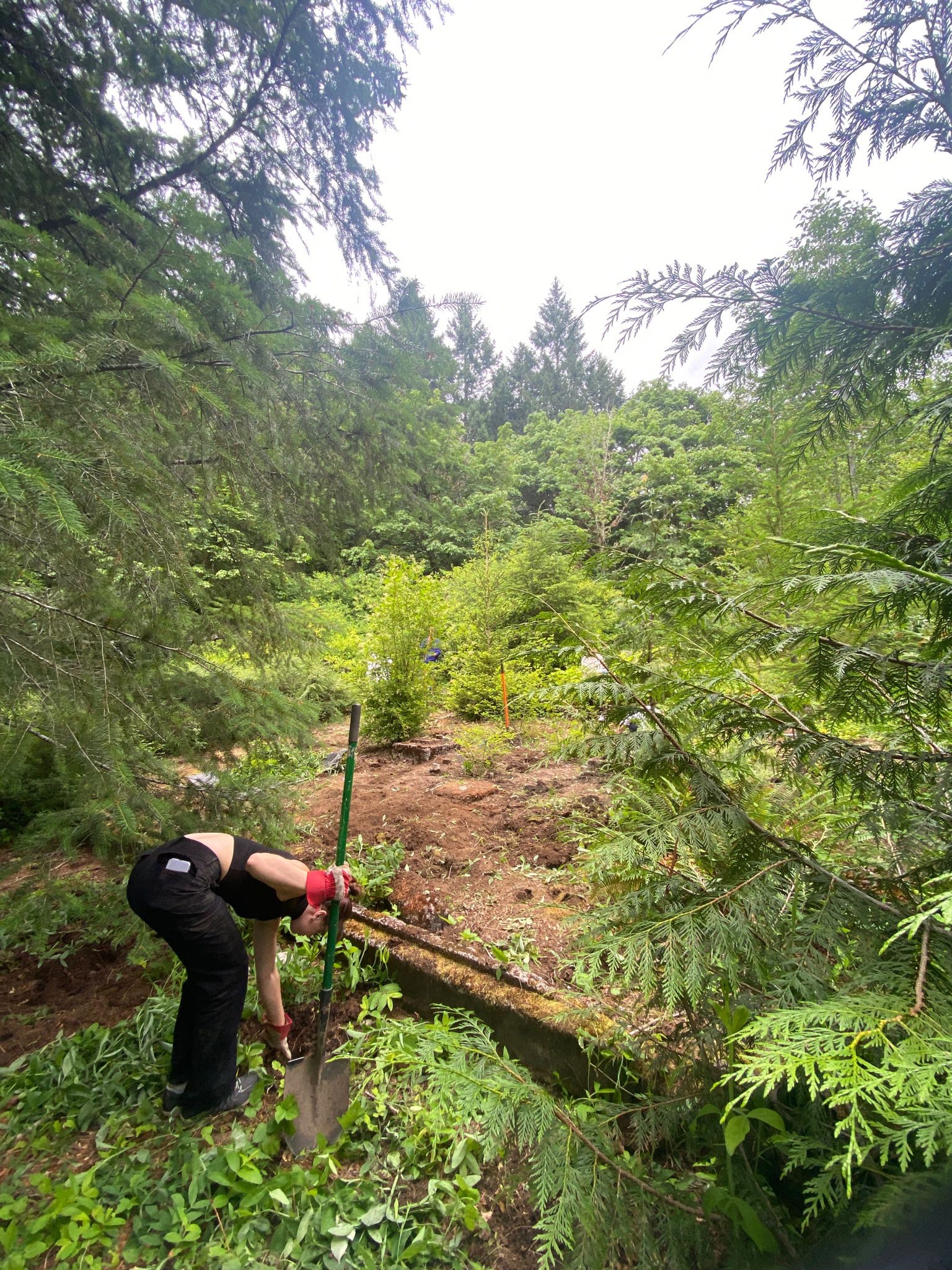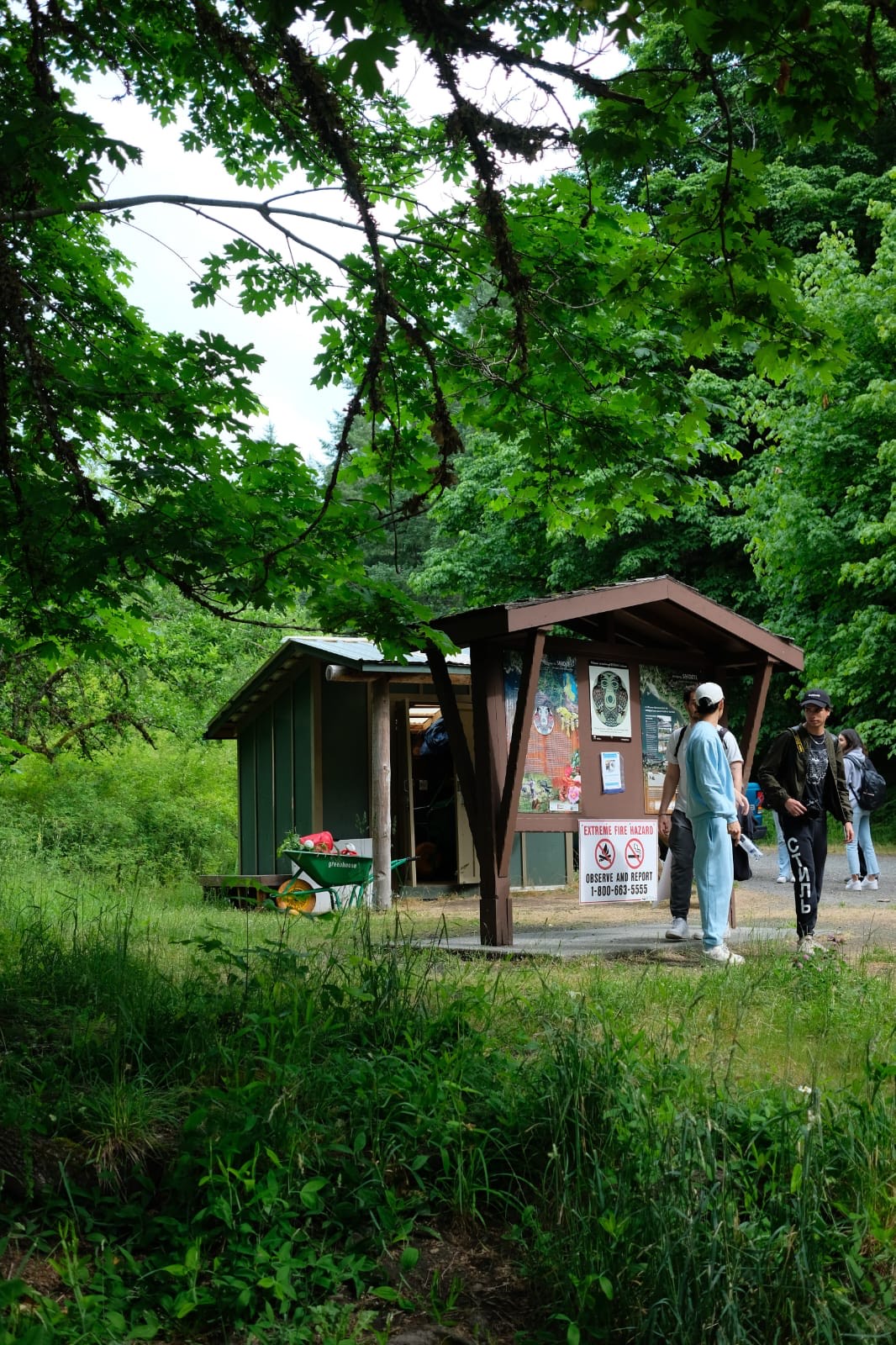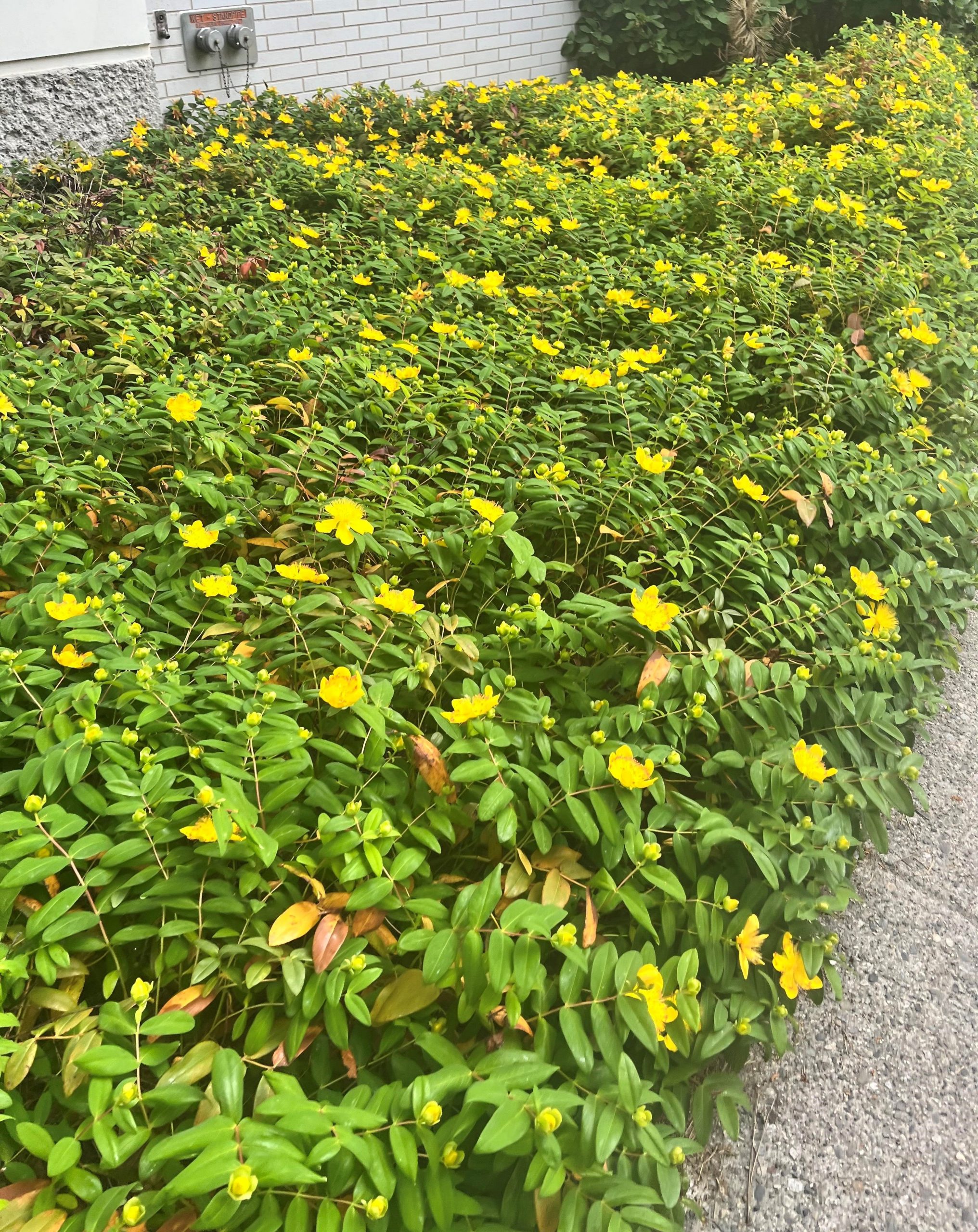

Plucking the roots of plants whose names I hadn’t known before, I stand with amazing people, who are passionately but clumsily using shovels. We are hoping to help restore the Indigenous land after many ecological disasters colonialism has brought to it. I stand at W̱SÁNEĆ First Nations’ Territory, located on the Saanich Peninsula.
I was lucky to get an offer to participate as an international student, visiting these lands, in a wonderful Land Restoration activity, kindly offered by the Building Bridges Team. Land Restoration is a practice aimed to aid and accelerate the recovery of the degenerated land (Santini & Miquelajauregui, 2022). On the Saanich Peninsula, the land has been subjected to industrial degeneration, as well as the invasion of the non-native species, brought by the settlers. As a part of our contribution to the land restoration, we help remove the invasive species from the land to make space for the native plants.
I loved how the Land Restoration folks explained to us that we do not pluck the invasive plants aggressively. Instead, we want to have the “It is not your place, nor your time” kind of attitude. It stood out to me, as the approach is so gentle and sincere. We do not wish to harm the plants or pursue our hatred but to restore the land.
A group of 12 enthusiastic volunteers learned how to distinguish St. John’s Wort (Hypericum calycinum) by its bright yellow rose-like flower and specific shape of its leaves. Apparently, this plant is used for decorative purposes in recreational areas. Oddly enough, I knew I had seen it somewhere earlier. At our UBC Point Grey campus, we use the invasive St. John’s Wort for decorative purposes! Lots of them can be spotted near Seed Library at UBC Woodward Library.
Once removed or cut from the soil, the invasive plants need to be disposed of safely. A few people grab the large piece of tarp holding all of the stems and roots and transport it safely to the designated spot, from where it’s going to eventually become landfill. This is currently the safest way to dispose of invasive plants, as composting them doesn’t always eliminate the reproductive parts of the plants (Invasive Plant Disposal, n.d.).


Land restoration can be practiced at home, too. Looking out for one’s own garden could be beneficial to control the spread of the invasive species, assisting the native ecosystems. Invasive Species Council of BC can help you identify some of the invasive species nearby. Then, after carefully researching the mindful extraction of those plants from the soil, you can direct your wastes to one of the landfills. You can also connect with the Pulling Together initiative to volunteer for the Land Restoration at the Saanich District.
Another value of W̱SÁNEĆ people was to never take more than needed. I really adored that, as current capitalistic values really go in contrast with that mindset. Culturally modified trees are an example of that mindset – carefully stripping the cedar bark to make clothing, mats and ropes without unnecessarily cutting down the tree (Stryd, 2001). This way, the bark is collected sustainably, because the tree is able to restore the stripped part gradually over time. What a valuable practice! In this session, I found that there is so much to learn from W̱SÁNEĆ people and other First Nations’ cultures, and I look forward to continuing my learning journey.
Did my post resonate with your learning journey? Share what you are learning in the comments below.
References
Invasive plant disposal. Saanich. (n.d.). Retrieved June 27, 2023, from https://www.saanich.ca/EN/main/community/natural-environment/invasive-species-noxious-weeds-wildlife/invasive-plants/invasive-plant-disposal.html
Santini, N. S., & Miquelajauregui, Y. (2022). The restoration of degraded lands by local communities and indigenous peoples. Frontiers in Conservation Science, 3 https://doi.org/10.3389/fcosc.2022.873659
Stryd, A. H., British Columbia. Archaeology Branch, British Columbia Government EBook Collection, & Resources Inventory Committee (Canada). (2001). Culturally modified trees of british columbia: A handbook for the identification and recording of culturally modified trees (Version 2.0. — ed.). Resources Inventory Committee.
